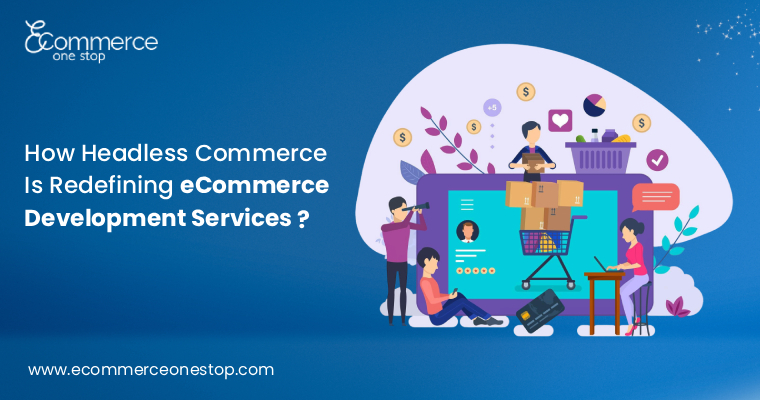
What Is Headless Commerce?
Traditional ecommerce platforms are tightly linked—front end and back end combined. Changing one part often affects the rest. Headless commerce separates the layers.- The back end manages business processes and inventory through APIs.
- The front end can be customized using tools like React or Vue.
- API-first ecommerce allows data to flow freely, avoiding locked-in templates.
How Does Headless Commerce Work in Practice?
Headless commerce relies on APIs to connect front-end interfaces with back-end systems.- Product or inventory updates in the back end immediately reflect on websites, apps, or other platforms.
- Developers can deploy content once and show it everywhere.
- Checkout, mobile apps, and voice-activated devices all receive updates in real time.
- Data transfer is efficient, improving page speed and user engagement.
Why Does Headless Offer More Flexibility for eCommerce Development Services?
Global ecommerce revenue exceeds $6.8 trillion by 2028 (Retail Dive). Headless commerce provides flexibility that traditional platforms cannot match.- Front-end updates can occur without altering back-end systems.
- Design changes can be rolled out weekly rather than yearly.
- The system easily scales during high traffic events.
- Integrations with ERP, loyalty apps, or custom tools are smoother.
- Personalized features from external AI or third-party services can be added efficiently.
How Real Brands Are Putting Headless to Work?
80% plan headless adoption in the next two years (ETRetail). Companies are seeing measurable results after adopting headless commerce:- Mobile and website operations integrate smoothly, improving user experience.
- Checkout times and page load speeds increase, keeping customers engaged.
- Front-end customization and back-end efficiency lead to higher conversions.
What's Next for the Future of eCommerce Platforms?
Ecommerce platforms are moving toward modular, composable systems.- Businesses can mix and match back-end components.
- AI and data-driven tools support smarter operations.
- Updates can happen without downtime, keeping customer experiences consistent.
- Teams stay agile, adapting quickly to market or customer demands.
Conclusion
Headless commerce transforms rigid stores into adaptable systems. Decoupling the front end from the back end improves performance, speed, and integration. Brands that adopt headless setups can respond faster to market changes. For businesses ready to scale, connecting with an ecommerce website development company in USA is a practical step toward growth.Schedule your consultation with our team today.
Let's Talk


